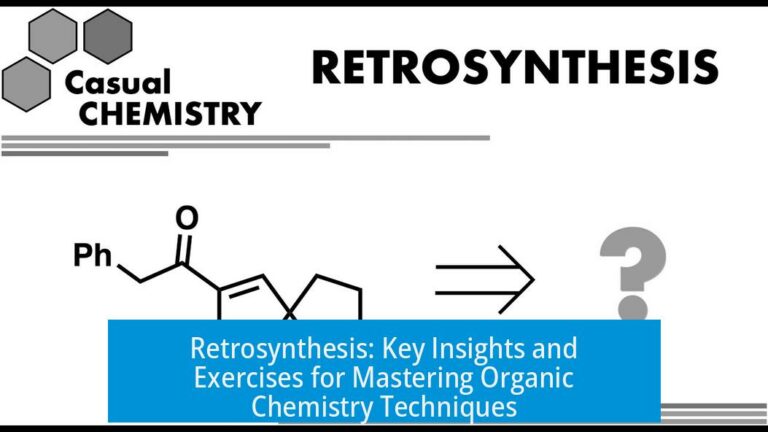Understanding the Inductive Effect: Definitions, Mechanisms, and Implications

The inductive effect is the polarization of sigma bonds caused by electronegative atoms or groups that withdraw electron density through the bond, creating partial charges along the molecule. This electronic displacement influences molecular properties like acidity, stability, and reactivity.
1. What Is the Inductive Effect?
The inductive effect describes how electronegative atoms pull electron density toward themselves through sigma (single) bonds. This shifts the electron cloud, resulting in partial positive and negative charges on atoms in the molecule. For example, in a carbon-chlorine (C–Cl) bond, chlorine is more electronegative than carbon. It pulls electron density towards itself, leaving carbon slightly electron-deficient and bearing a partial positive charge.
This effect is transmitted along the chain of atoms connected by sigma bonds, but the intensity decreases with greater distance from the electronegative center.
2. Origin and Transmission of the Inductive Effect
The inductive effect arises from the differences in electronegativity between atoms. Atoms like fluorine, chlorine, oxygen, and nitrogen pull electrons toward themselves, while less electronegative atoms yield or lose electron density.
- Electron withdrawal through sigma bonds polarizes the bond.
- Partial positive charges form on atoms near electronegative centers.
- The effect propagates but weakens with each intervening bond.
For practical purposes, the effect is significant only over 1 to 3 sigma bonds. For example, trichloroacetic acid exhibits a much stronger inductive effect than 3,3,3-trichloropropanoic acid because the chlorines on the alpha carbon pull electron density closer to the acidic site.
3. Inductive Effect and Molecular Stability
The partial charges created by the inductive effect can stabilize or destabilize nearby functional groups or charged centers. This stabilization affects molecules’ behavior, especially acids and bases.
Consider acidity: when an acid loses a proton, it forms a conjugate base with a negative charge. If electronegative groups nearby withdraw electron density, they help stabilize this negative charge. Better stabilization lowers the conjugate base’s energy, making the original acid more likely to donate a proton.
For instance, trichloroacetic acid (pKa ≈ 0.66) is much stronger than acetic acid (pKa ≈ 4.7). The three chlorine atoms withdraw electron density inductively, stabilizing the carboxylate ion formed upon deprotonation.
Example Table: Effect of Electron-Withdrawing Groups on Acid Strength
| Molecule | Substituent(s) | Inductive Effect | Approximate pKa |
|---|---|---|---|
| Acetic Acid | –H | None | 4.7 |
| Chloroacetic Acid | –Cl (alpha position) | Strong electron-withdrawing | 2.86 |
| Trichloroacetic Acid | –Cl × 3 (alpha position) | Very strong electron-withdrawing | 0.66 |
| 3,3,3-Trichloropropanoic Acid | –Cl × 3 (beta position) | Weaker effect (through 3 bonds) | ~2 |
This table highlights how the proximity and number of electronegative substituents affect acidity through the inductive effect.
4. Inductive Effect in Aromatic Systems
The inductive effect occurs not only in aliphatic systems but also in aromatics like benzene rings. Substituents attached to the benzene ring can withdraw electrons through sigma bonds, reducing electron density on the ring. This influences various reactions, such as nucleophilic aromatic substitution (SN Ar).
- Electron-withdrawing groups decrease ring electron density.
- This lowers the ring’s nucleophilicity, making substitution reactions more difficult.
- Halogens (except iodine) generally exert strong inductive electron withdrawal on the ring.
Therefore, the inductive effect modulates aromatic ring reactivity based on the nature of substituents present.
5. Inductive vs. Conjugative Effects: Key Differences
The inductive effect acts through sigma bonds by polarization due to electronegativity differences. Conversely, the conjugative effect involves delocalization of electrons via pi bonds or resonance structures.
- Inductive effect: Electron density shifts through sigma bonds; depends heavily on electronegativity; effect diminishes rapidly with bond distance.
- Conjugative effect: Electron delocalization through overlapping p-orbitals or resonance; affects molecular orbitals; often stabilizes molecules extensively.
In some molecules, both effects contribute to their overall stability and reactivity but through fundamentally different mechanisms. For example, acetic acid’s acidity benefits from both resonance stabilization of the conjugate base and inductive effects from the electronegative oxygen atom.
6. Role in Acid-Base Chemistry and Stability
Electronegative atoms near an acidic center stabilize the conjugate base by attracting excess electron density generated after the proton detaches. This lowers the energy of the conjugate base, promoting acid dissociation.
Inductive effects thus provide a clear explanation for differences in acid strengths among structurally related compounds. The closer and stronger the electron-withdrawing group is to the acidic site, the more significant its impact on acidity.
7. Limitations and Practical Considerations
Although useful for predicting trends, the inductive effect is not the sole determinant of molecular behavior. Resonance (conjugative) effects, steric factors, solvent interactions, and overall molecular geometry play critical roles.
The inductive effect weakens rapidly with bond distance, often becoming negligible beyond three atoms. Hence, substituents far from the reactive site have a minor inductive impact.
Additionally, the magnitude of the inductive effect depends on the substituent’s electronegativity and the nature of bonds involved.
8. Summary of Inductive Effect Principles
- The inductive effect arises from electronegative atoms withdrawing electron density through sigma bonds.
- This polarization creates partial positive and negative charges, stabilizing charged centers like carboxylate ions.
- It strengthens acidity by stabilizing conjugate bases following proton loss.
- The effect declines with increasing distance from the electronegative center.
- In aromatic systems, electron-withdrawing groups reduce electron density, influencing substitution reactions.
- It contrasts with the conjugative effect, which involves electron delocalization through pi bonds and resonance.
- Both inductive and conjugative effects contribute to molecular stability and reactivity.
Key Takeaways:
- Inductive effect is bond polarization by electronegative atoms through sigma bonds.
- It influences acidity by stabilizing conjugate bases with partial positive charges on adjacent atoms.
- The effect diminishes rapidly with distance and affects both aliphatic and aromatic compounds.
- The inductive effect differs fundamentally from the conjugative (resonance) effect.
- Both effects help explain chemical properties of molecules, including acidity and reactivity.
What causes the inductive effect in a molecule?
The inductive effect occurs when electronegative atoms pull electron density through polarized sigma bonds, creating partial charges along the molecule.
How does the inductive effect influence acidity?
Electronegative atoms stabilize the negative charge on the conjugate base by the inductive effect, making the acid stronger. For example, trichloroacetic acid is more acidic than acetic acid because of this stabilization.
Does the inductive effect work over long distances in a molecule?
The inductive effect weakens with distance. It is strong through immediate bonds but becomes much weaker beyond three bonds, reducing its influence on acidity or reactivity.
How is the inductive effect different from the conjugative effect?
The inductive effect involves electron withdrawal through sigma bonds, causing bond polarization. The conjugative effect involves electron delocalization through pi bonds or resonance, affecting molecular stability differently.
Can the inductive effect alter reactions in aromatic rings?
Yes, electronegative substituents on benzene reduce electron density via the inductive effect, making nucleophilic aromatic substitution harder by decreasing the ring’s electron availability.





Leave a Comment